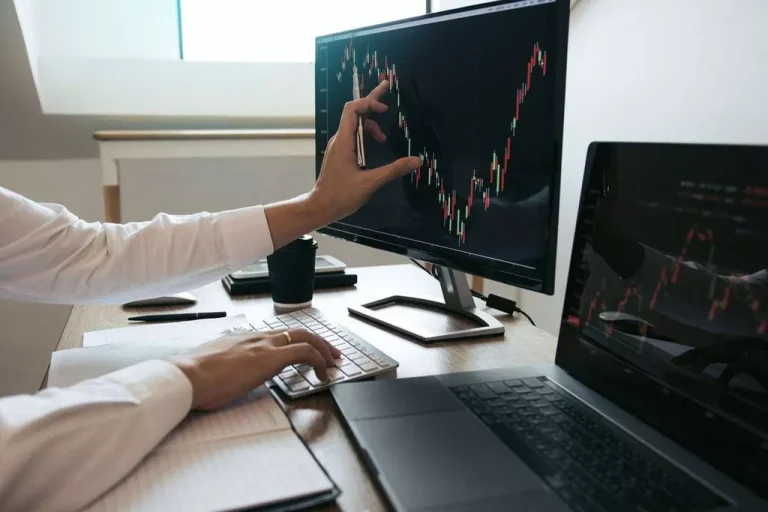Algorithmic Trading: What’s It, Examples, & Algo Trading Strategies
Algorithms additionally give merchants access to massive quantities of data that may otherwise be too difficult for humans to course of rapidly sufficient on their very own. By counting on algorithms, traders can analyze huge datasets in seconds and make knowledgeable selections much sooner than they could. Nevertheless, the way ahead for algorithmic trading also presents vital challenges. Regulatory pressures are prone to increase as governments and monetary authorities seek to address the risks and impacts of algorithmic buying and selling on markets. Traders will want to keep abreast of regulatory modifications and be positive that their algorithms comply with all related necessities. Failure to comply with regulatory necessities can lead to vital penalties and legal penalties.
This enables merchants to improve their total efficiency and refine their trading strategies. The course of begins with the information feeds supplying real-time market information to the trading algorithms. The algorithms then analyze this knowledge and generate trading alerts based mostly on predefined guidelines. These signals are despatched to the execution systems, which place the trades in the market. Smart contracts, a function of blockchain technology, are also being leveraged in algorithmic buying and selling.
Understanding Algo Buying And Selling: Definition, Overview, And Key Insights

Understanding the historical past of algorithmic trading provides useful context for investors and merchants trying to engage in this advanced but potentially worthwhile investment technique. It highlights how a once niche apply has advanced into a vital part of modern financial markets whereas illustrating the function of key events, technologies, and individuals that have formed its progress. First, it’s advisable to learn programming languages commonly used in algo buying and selling, corresponding to Python, Java, or C++, and to gain a stable understanding of statistical ideas and technical analysis. This foundational data is important for designing and testing efficient buying and selling methods. In the following a long time, exchanges enhanced their abilities to accept electronic buying and selling, and by 2009, upward of 60% of all trades in the U.S. have been executed by computer systems. Algorithmic trading uses complex mathematical fashions with human oversight to make decisions to commerce securities, and HFT algorithmic trading allows companies to make tens of thousands of trades per second.
Moreover, the reliance on cutting-edge expertise necessitates regular upgrades and investments in infrastructure to take care of competitiveness, including to the operational burden. For merchants operating in unstable markets, even a slight delay in execution attributable to technical issues can lead to antagonistic outcomes. This methodology uses automation and predefined rules to systematically and effectively execute trades in algorithmic buying and selling. It advantages institutional buyers and huge traders by enabling precise control, quicker execution, and improved price discovery, leading to favorable outcomes.
This continuous quoting facilitates commerce circulate, particularly in highly liquid markets. Moreover, environment friendly execution by way of algorithms can scale back transaction prices, as they are programmed to execute trades when prices are lowest. Now that you’ve got learn through the advantages of algo trading, it is time to take a look at the disadvantages. Despite having excessive accuracy and speeds and being devoid of feelings, algorithmic trading does have some noteworthy disadvantages.
Most importantly, algo buying and selling helps to eliminate the impact of emotions from the trades. The merchants might turn out to be greedy for income or afraid of losses and should take decisions not meant to be taken. Algo buying and selling helps to scale back the subjective elements of trading and ensures the selections are made objectively. Some markets have strict regulations on algorithmic trading, and traders should ensure their methods adjust to native legal guidelines. Utilizing machine learning-driven options via regulated brokers, like The Intelligent Trader, can help to ensure compliance with monetary rules. For merchants creating their very own algorithmic methods, expertise in programming, information science, and quantitative finance is required.
Nonetheless, options like The Intelligent Trader provide pre-built, machine learning-driven buying and selling algorithms, eliminating the need for customized growth. Not Like human merchants who want sleep, trading algorithms can function constantly, monitoring markets and executing trades across the clock – particularly helpful for Forex and crypto markets, which never close. Buying And Selling algorithms course of huge amounts of market knowledge in milliseconds, executing trades far sooner than any human. This velocity is crucial in fast-moving markets, where a delay of even a couple of seconds can influence commerce profitability.

The Method To Do Algorithmic Trading Profitably?
This adaptability reflects the versatility of algorithm-based trading throughout the ever-evolving monetary panorama. It leverages machine studying to assemble predictive fashions that autonomously acknowledge patterns inside intensive datasets. These fashions then distill indicators, providing priceless insights to form buying and selling technique. Over-optimization of the technique is another danger where strategies tailored to previous information typically fail in reside markets. Lastly,relying just on the algos may diminish the human judgment and probably Cryptocurrency exchange overlook the qualitative elements during a black swan event. In brief, algorithmic buying and selling makes use of a robust strategy by way of backtesting, strong risk administration, right tech and ongoing changes.
- Since algo-trading doesn’t require human intervention to make shopping for or selling selections, algo-trades have a a lot higher accuracy.
- By automating advanced decision-making processes, machine studying algorithms can help traders react more rapidly to market changes, mitigate threat, and optimize portfolios.
- Integrating FIFO methods with comprehensive tax planning might help in managing taxable features and losses extra effectively.
- Algo trading is an innovative method of buying and selling that uses algorithms as a pre-defined set of instructions.
- These algorithms think about a wide range of things, corresponding to market developments, historical price data, trading quantity, and information events, to generate signals for buying or promoting property.
Understanding each the advantages and disadvantages helps set realistic trading algorithms examples expectations. The stock market evolves and yesterday’s successful technique would possibly fail tomorrow. NYSE then introduced the Designated Order turnaround system, which was the start of algos. In the late Eighties, establishments began using computer systems for giant trades, especially for arbitrage.
Algorithmic buying and selling is subject to a complex net of laws and compliance necessities. These can range significantly between different markets and jurisdictions, making it challenging for traders to navigate the regulatory landscape. You might want to make investments a lot of resources into algorithmic trading to have the ability to have a ready, customizable algorithmic trading module in your wealth management platform. This is as a end result of creating such algorithms from scratch is each time-consuming and requires in depth programming information.
Arbitrage is another common instance, where algorithms exploit short-term value discrepancies between identical or comparable digital assets across totally different markets. For instance, a inventory market trading algorithm might trigger a purchase at a low stock price on one change and sell it at the next value on another, capturing the price distinction as profit. It is true that, in the lengthy run, algorithmic trading proves to be cost-effective should you intend to place multiple trade orders every day. However, the preliminary price of establishing the algo-trading infrastructure is expensive. Algo-traders desire to have the quickest computers which may be capable of inserting trades at instantaneous speeds.
Markets are dynamic and influenced by a extensive range of things, a lot of which can’t be captured by mathematical fashions. Over-reliance on fashions can end result in https://www.xcritical.com/ missed alternatives or unanticipated losses when market conditions deviate from the mannequin’s assumptions. Traders should remain vigilant and be ready to regulate their methods in response to altering market conditions. Human merchants are topic to a variety of emotional and psychological biases that may affect their trading selections.

